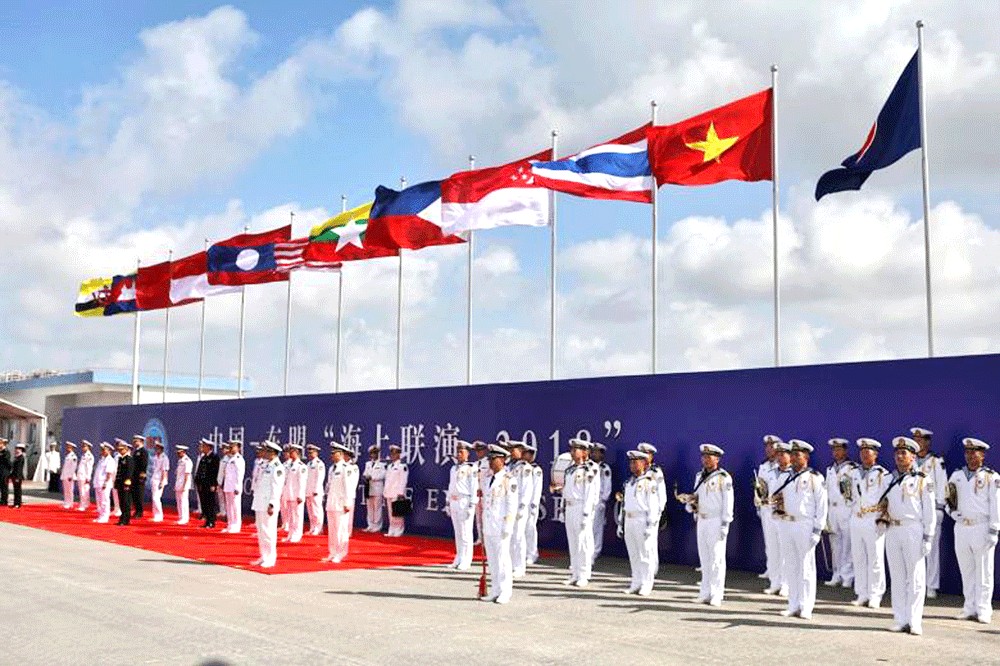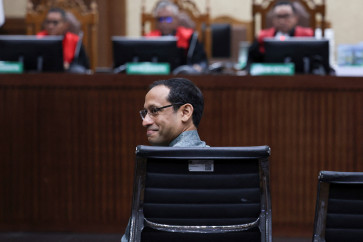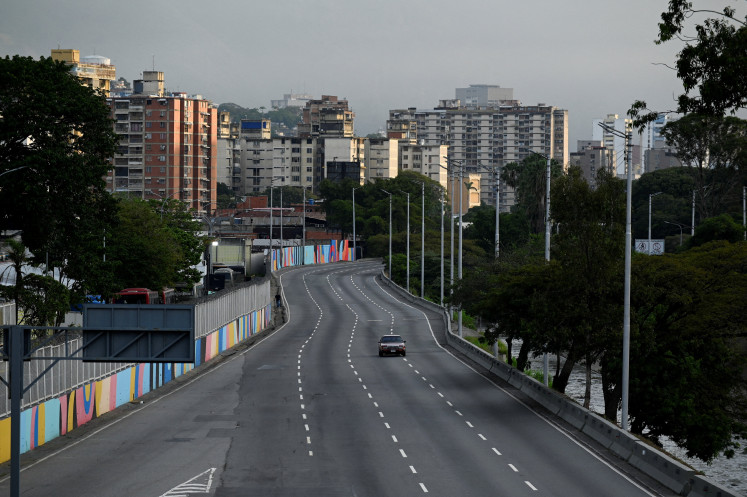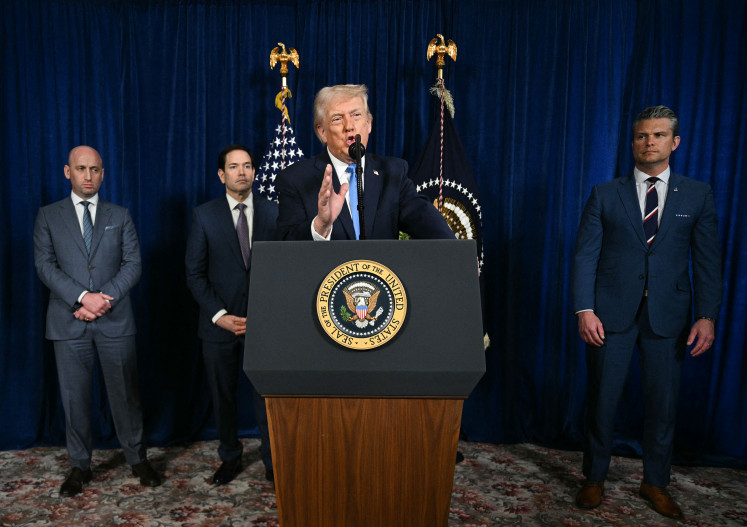Popular Reads
Top Results
Can't find what you're looking for?
View all search resultsPopular Reads
Top Results
Can't find what you're looking for?
View all search resultsThe relevance of ASEAN Outlook on Indo-Pacific amid COVID-19
The Sino-United States rivalry is rapidly escalating after both superpowers increased their military presence in the South China Sea.
Change text size
Gift Premium Articles
to Anyone
T
he COVID-19 pandemic is unfolding to be the biggest shock to global politics and the economy. It has created formidable challenges and a high degree of uncertainty, particularly in the Indo-Pacific region. Does this new dynamics make the ASEAN Outlook on the Indo-Pacific (AOIP) less relevant to meet the current challenges?
The answer is indeed the opposite. The call for operationalizing the AOIP as a robust strategic guidance for ASEAN countries in response to the geopolitical and strategic changes caused by the pandemic is increasingly more pertinent.
Mitigation of the impact of the pandemic does not mean the end of geopolitical competition; it will be a new arena in which a great power competition will play out. Consequently, the pandemic has accelerated the existing geopolitical trend in the region.
The Sino-United States rivalry is rapidly escalating after both superpowers increased their military presence in the South China Sea. It has created dire security challenges that are detrimental to political and economic stability in the region.
Through the AOIP, ASEAN may potentially play a central role in coping with such geopolitical challenges by developing a more flexible and reliable regional architecture. Strong emphasis on the principles of ASEAN centrality and inclusivity within the AOIP will ensure its continuing relevance to guide ASEAN in engaging countries and major powers in the region.
ASEAN centrality will make the AOIP more relevant as the principle reinstates the ASEAN agenda-setting for regional security architecture. The relevance has been clearly shown in the present COVID-19 crisis, in which ASEAN has increased its international role and strategic presence.
ASEAN has been active in consolidating a collective response as a regional interstate platform in strengthening COVID-19 responses. Since the outbreak, ASEAN has managed to engage with major dialogue partners in advancing essential cooperation in pandemic mitigation.
This achievement will generate diplomatic legitimacy to lead regional multilateralism in the Indo-Pacific. It will pave the way for dialogue partners to cooperate in priority areas through practical projects of common interest and mutual benefit through the ASEAN mechanism.
The cooperation will bring about a stable ASEAN-led regional architecture built upon an ecosystem of peace. The realization of such regional architecture is a manifestation of the centrality of ASEAN in achieving stability and prosperity in the region. Any regional architecture in the region would only be plausible with the active involvement of ASEAN.
This also means that China cannot claim its Belt and Road Initiative without duly taking into account the AOIP. Similarly, Quad countries cannot assert their insistence on their Indo-Pacific visions as serving ASEAN interests without echoing ASEAN’s position on principles, norms and rules.
As the pandemic presents an existential threat of unmatched proportions to human health around the world, an inclusive outlook of regional architecture is certainly more desirable. Through the AOIP, no country should be left alone, and no one should be left behind in this battle. It should be very much more suitable to cope with the current threat of the pandemic, which does not recognize borders.
Inclusivity means that the AOIP is emphasizing engagement with all states in the region without exception. It also brings small countries into the conversation that have an equal stake and strategic interest in working together in fighting the pandemic.
The inclusive vision will make ASEAN the only acceptable platform for external powers to engage with in the region. For ASEAN to exercise its influence through persuasion and soft power in the management the geopolitical dynamic in the region, inclusivity would be inevitably a key aspirational principle.
More importantly, inclusivity must secure a threshold support from all great powers within the region and beyond. At the same time, ASEAN needs to maintain strategic autonomy from them, particularly China and the US. In this regard, Foreign Minister Retno Marsudi has underscored the ASEAN commitment to cooperating in maintaining regional peace and stability without being dragged into the storm of geopolitical tension and binary confrontation.
Furthermore, the inclusivity should be considered as a work in progress in terms of ideas and proposals. It, therefore, welcomes any collaboration in the region in mitigating the health and economic impacts of the pandemic, including access to safe and effective COVID-19 drugs and vaccines
The relevance of the AOIP amid the pandemic has been an ambition that ASEAN should meet. The AOIP principles of ASEAN centrality and inclusivity are crucial to achieve this strategic objective. This ambition is certainly not without its challenges.
The ultimate challenge is ASEAN’s ability in nurturing its cohesiveness. Furthermore, ASEAN must be able to turn its vision into doable actions while navigating the uncharted waters of the Sino-US rivalry.
Last but not least, ASEAN must be more proactive in supporting a rule-based regional order.
***
The writer is senior Indonesian diplomat living in Ottawa. The views expressed are his own.










